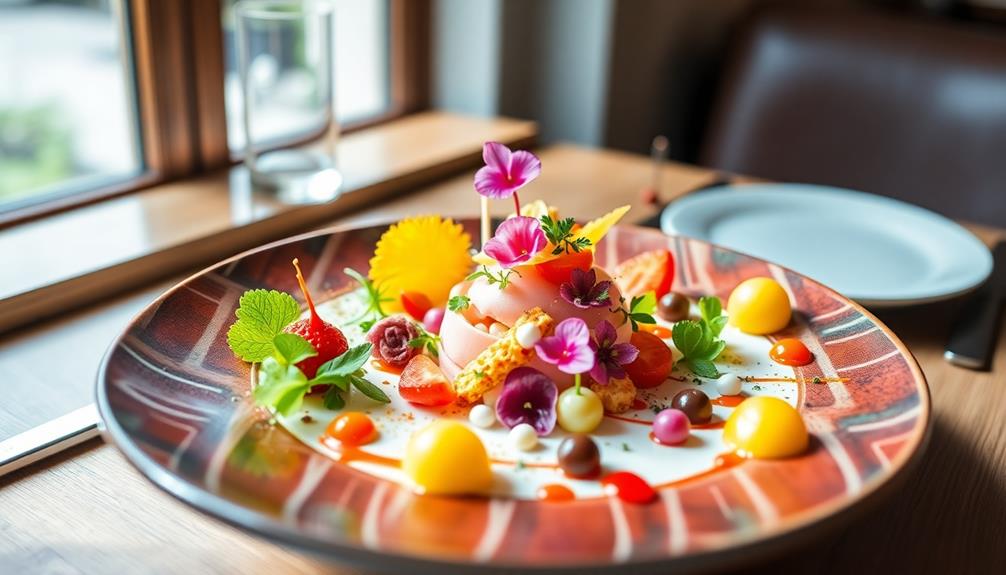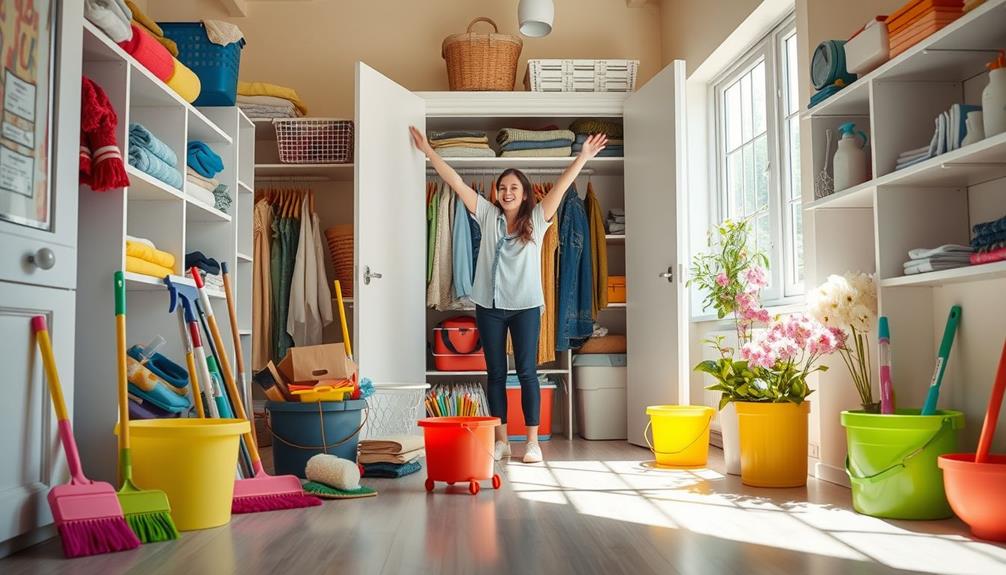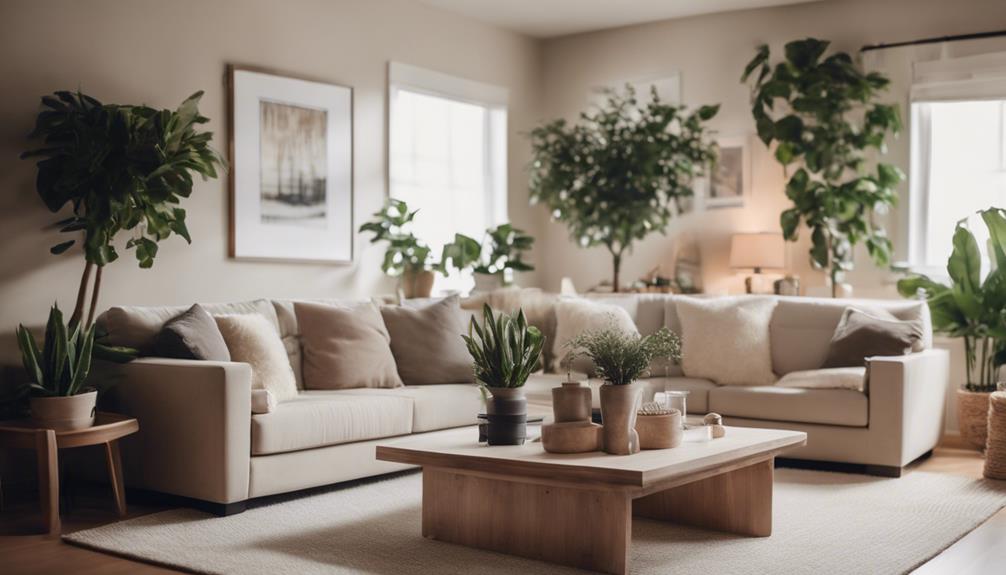The trend of ‘Instagrammable’ food could have a significant impact on how you view meals and your eating habits. You may start to crave visually pleasing dishes more than flavorful ones. Continuously scrolling through stylized food photos could result in feelings of inadequacy and FOMO. It is easy to get caught up in comparing your meals to idealized representations, which can set unrealistic standards. This pressure might divert your attention from taste to aesthetics, affecting your overall dining experience. By recognizing these psychological effects, you can cultivate a healthier relationship with food and make choices that genuinely fulfill you. There is more to explore on this fascinating topic.
Key Takeaways
- The overexposure to visually appealing food images on social media can lead to unrealistic expectations and dissatisfaction with real meals.
- Constant comparison to idealized food presentations can negatively impact body image and foster unhealthy food choices.
- Snapping photos of meals often shifts focus from taste to aesthetics, diminishing overall dining enjoyment.
- Limiting social media usage can improve mental health and body image, fostering a healthier relationship with food.
- Engaging with positive food content and diverse cuisines encourages appreciation for nutritious meals and supports mindful consumption.
Social Media's Role in Food Perception
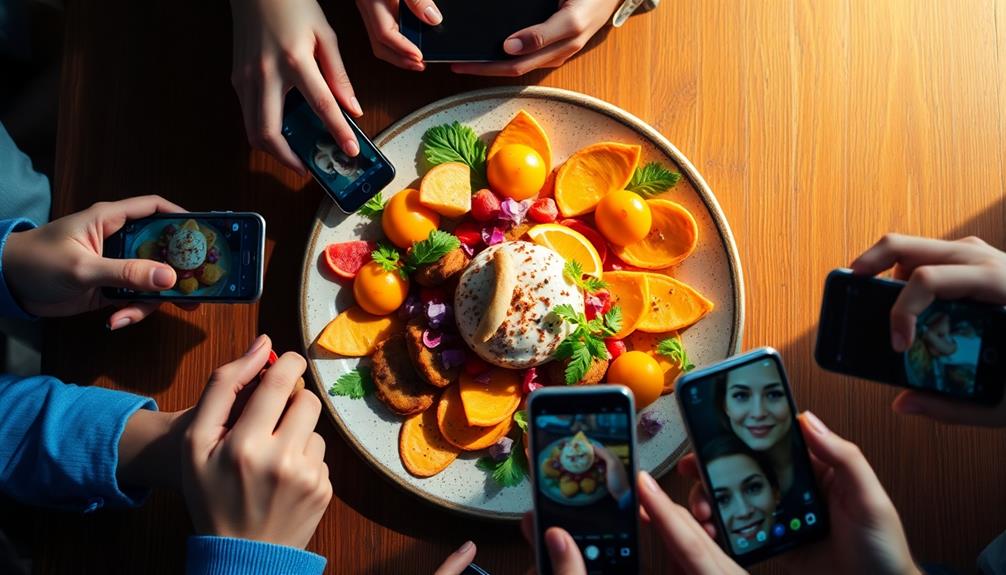
In today's digital age, you can't scroll through Instagram without encountering a mouthwatering array of food photos. This phenomenon, often dubbed "food porn," has transformed how you perceive food, especially unhealthy food. With over 438 million food-related images on Instagram, food photography dominates the platform, shaping your cravings and choices.
For instance, traditional desserts like Kue Putu and Dadar Gulung are often beautifully presented, making them even more tempting to viewers. When you see enticing images of indulgent dishes, your brain responds to these food cues, enhancing the perceived tastiness and pleasure of those foods. Research shows that when you photograph and share these indulgent meals, you tend to rate them higher, reinforcing your desire for them.
While scrolling through social media platforms, you might find yourself drawn to visually appealing meals, which can create a sense of social connection. Sharing your culinary creations fosters intimacy and validation, as likes and comments roll in.
However, be mindful; excessive exposure to these images can lead to sensory boredom. You may find that the thrill of indulging in actual meals diminishes when you frequently view stunning food photography. Balancing your engagement with these images is essential to maintain genuine enjoyment in your eating experiences.
Psychological Effects of Food Photography
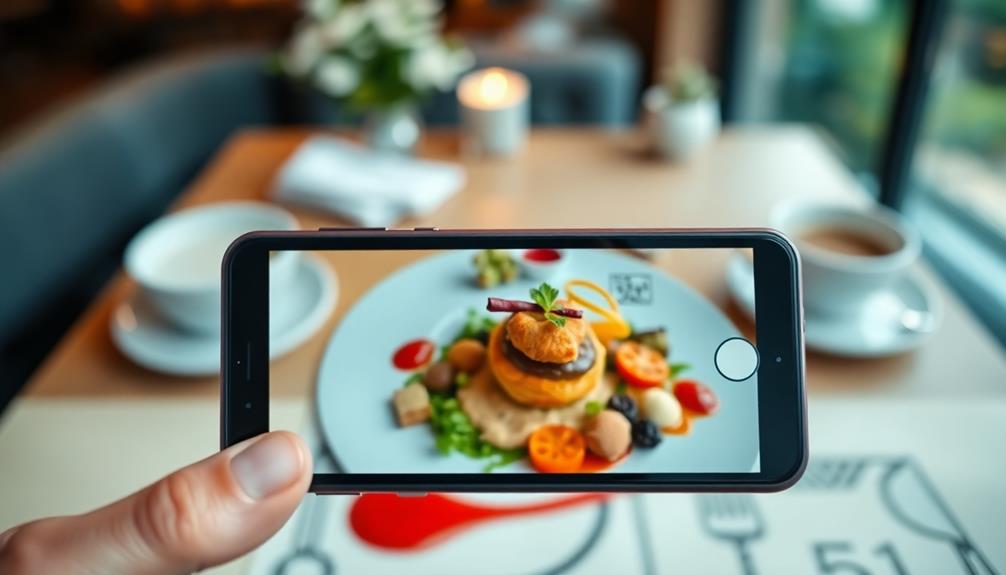
Food photography captivates your senses, but it can also trick your brain into feeling satisfied before you even take a bite. For instance, the vibrant colors and intricate plating of dishes like Red-Braised Pork Belly can enhance your visual experience and increase your cravings.
Studies show that excessive viewing of food images can lead to sensory boredom, making you feel full before you actually taste the meal. This phenomenon manifests when you scroll through numerous pictures, causing your enjoyment of real food to diminish.
Research involving 232 participants revealed that those who viewed 60 images of sweet foods rated peanuts less appetizing than those who saw salty food images. This highlights how visual exposure directly influences your food choices and perceptions.
Grounded cognition theories suggest that looking at food activates the same systems in your brain as eating does, triggering physiological responses like the secretion of ghrelin, the "hunger hormone."
Interestingly, the more you see specific food types, the less you crave them. You might find that the first few bites are delightful, but subsequent bites lose their appeal.
Limiting your exposure to food photography could enhance your dining experiences, allowing you to savor your meals fully and optimize your overall food intake enjoyment.
Impact on Eating Habits
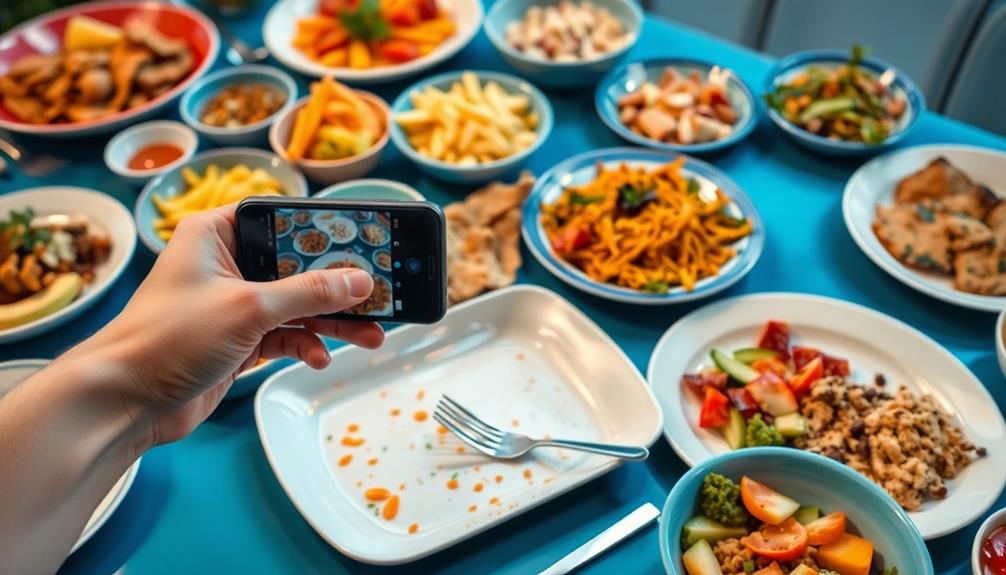
You might notice that snapping pictures of your meals can change how you actually eat. With social media's constant influence, you could find yourself prioritizing the act of photographing over genuinely enjoying your food.
For instance, you might be tempted to capture the vibrant colors of a Mushroom Masala or the enticing wrap of a Kathi Roll, focusing more on aesthetics than taste. This shift not only affects your eating experience but may also lead to disordered eating habits if you're not careful.
Food Photography and Disorders
The rise of food photography on social media has transformed how people interact with meals, often intertwining culinary experiences with visual aesthetics. You might find yourself scrolling through countless images of vibrant dishes like Caldeirada, which not only showcase the beauty of Brazilian cuisine but also highlight the cultural significance of food.
This habit of documenting meals can signal underlying eating disorders, as studies show that 23% of users photograph food for photoblogs or diaries, reflecting unhealthy attachments to their meals.
Moreover, the constant influx of food visuals creates unrealistic expectations regarding dining experiences. You may feel dissatisfied or uncomfortable during actual meals, as the idealized versions you see online often set the bar too high.
Research indicates that excessive exposure to specific types of food can dull your desire for those same foods, altering your eating habits and preferences. This phenomenon suggests that repeated consumption of certain flavors can lead to habituation, making them less appealing over time. Interestingly, **nostalgia and food preferences** often play a significant role in this process, as people may initially crave foods tied to cherished memories but lose interest after frequent exposure. Consequently, even comfort foods linked to past experiences may no longer hold the same allure after regular indulgence.
Limiting your exposure to these images may be beneficial. It can enhance your dining experiences by preventing premature satiation and allowing you to truly enjoy what's in front of you.
Recognizing the psychological effects of food photography can help you reclaim a healthier relationship with eating, moving away from the pressures that social media can impose.
Social Media's Influence
Scrolling through endless food posts on social media can subtly reshape your eating habits. With over 88% of U.S. adults eating while looking at a screen, it's clear your social media feed has a powerful impact. The allure of beautifully staged food photos creates expectations that can affect your actual eating experience.
For example, the vibrant colors and artistic presentations of traditional dishes like Chilaquiles may set a high standard for your meals at home. Here are some ways this influence manifests:
- Unrealistic Expectations: Constant exposure to curated food images may lead you to expect every meal to be Instagram-worthy, diminishing enjoyment during regular meals.
- Sensory Boredom: Psychological science suggests that viewing numerous food pictures can result in sensory overload, making you less excited about the next meal.
- Premature Satiation: Studies show that excessive food visuals can cause you to feel full before you even eat, leading to lower enjoyment levels.
- Shifted Social Dynamics: Trends like Mukbang reflect how social media alters your perception of eating, turning meals into performances rather than personal experiences.
Being aware of these influences can help you cultivate a healthier relationship with food, both online and offline.
Body Image and Food Choices
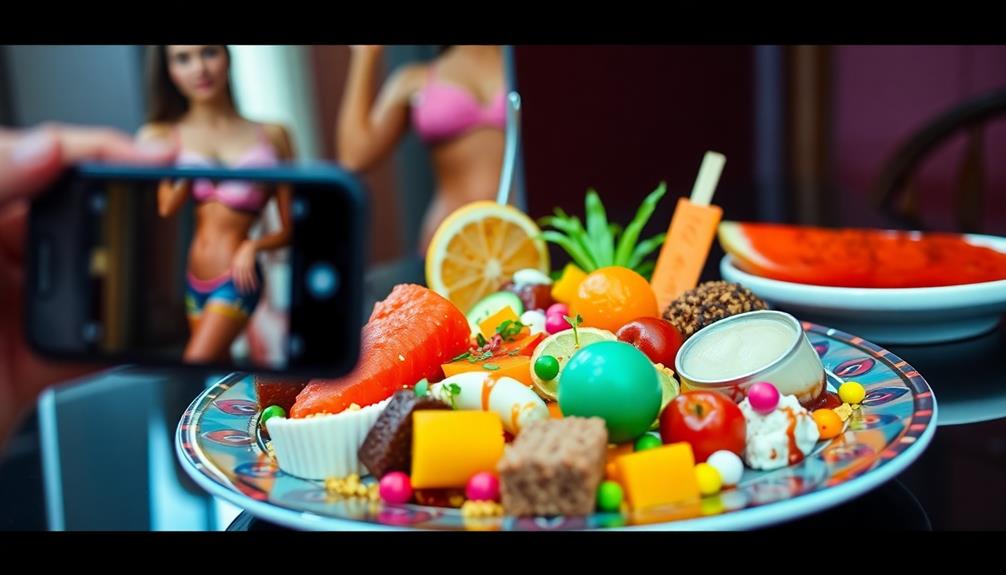
Scrolling through Instagram, you might find yourself comparing your meals to those perfectly styled food photos.
For instance, beautifully presented dishes like a Grilled Peach and Burrata Salad can exacerbate feelings of inadequacy when your own meals don't measure up.
These idealized portrayals can skew your perception of what's normal, making it easy to feel inadequate about your own choices.
As you chase these unrealistic standards, it can complicate your relationship with food and impact your body image.
Social Media Comparisons
Constant exposure to idealized food images on social media can skew your perception of both food and body image. For example, beautifully arranged dishes like Dorayaki (Red Bean Pancake) can create a desire for perfection in both our meals and our bodies.
When you're scrolling through pictures of perfectly arranged meals, it's easy to feel pressured to conform to these unrealistic standards. This comparison can lead to unhealthy food choices and a distorted view of your own body.
Here are some key impacts of social media comparisons:
- Unrealistic Standards: Social media often portrays food and bodies in unrealistic ways, which can make you feel inadequate.
- Toxic Diet Culture: The constant stream of curated content promotes a diet culture that can negatively affect your self-esteem.
- Negative Self-Image: Increased exposure to idealized portrayals correlates with body image issues, especially among youth.
- Psychological Benefits of Reducing Use: Studies show that cutting back on social media can lead to improved body image and mental health.
Engaging with content that promotes healthy eating and body positivity can help mitigate these negative effects, allowing you to make better food choices and feel more confident in your body.
Idealized Food Portrayals
Idealized food portrayals on social media can considerably impact your food choices and body image. Platforms like Instagram often showcase visually appealing, but unrealistic food presentations, leading to unhealthy eating habits. You may find yourself craving these stylized foods, which can distort your perception of a desirable diet.
| Impact of Idealized Food Portrayals | Effects on Body Image and Eating Habits |
|---|---|
| Increased cravings for unhealthy foods | Heightened feelings of inadequacy |
| Pressure to emulate food aesthetics | Poor dietary choices based on appearance |
| Distorted views on nutritional value | Negative body image perceptions |
| Exacerbated dissatisfaction | Risk of developing disordered eating |
| Decreased self-esteem | Improvement in body image with less exposure |
Research indicates that constant exposure can exacerbate negative feelings, especially among adolescents and young adults. The allure of these idealized food portrayals often leads you to prioritize looks over nutrition, contributing to negative body image. However, reducing your exposure to such content may help improve your self-esteem and body image, emphasizing the psychological toll these portrayals can have on you.
Emotional Responses to Food Images
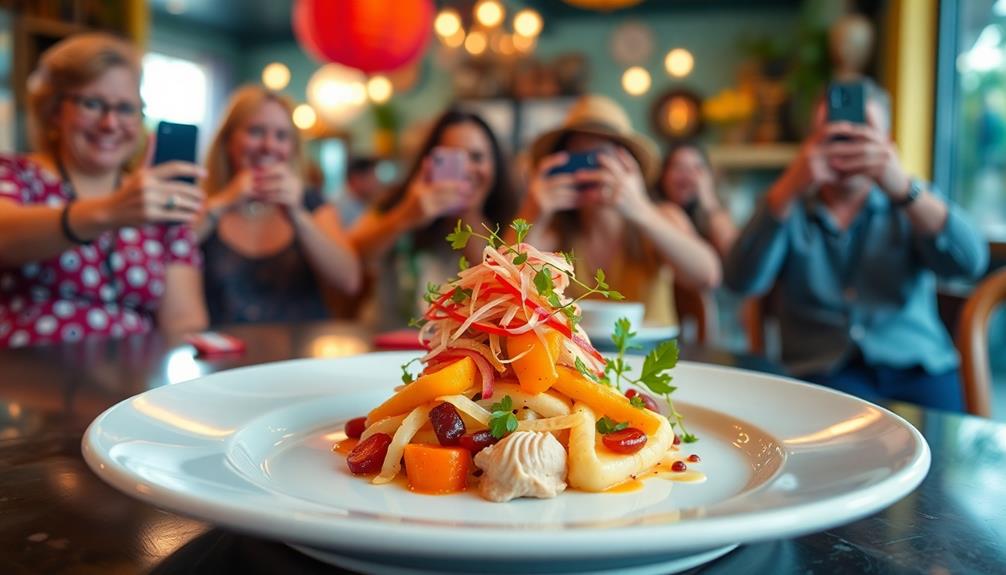
Food images flood our social media feeds, often eliciting a mix of emotions that can range from delight to anxiety. While scrolling through vibrant food photos, you might find yourself feeling excited about a meal, yet also pressured to replicate those perfect presentations.
For instance, seeing a beautifully arranged Graveyard Taco Dip might inspire creativity, but it could also lead to feelings of inadequacy if your attempt doesn't measure up. Emotional responses to food images can greatly impact your dining experiences.
Here are some remarkable aspects to reflect on:
- Sensory Boredom: Excessive exposure to food images can lead to feeling satiated before you even taste real food.
- Decreased Enjoyment: Viewing many images of similar foods might diminish your satisfaction during actual meals.
- Pressure & Anxiety: You may experience discomfort and anxiety, working to meet unrealistic food presentation standards.
- Social Validation: Sharing and liking food photos can create a sense of belonging, but it may also trigger negative emotions if your meals don't match up to curated content.
Understanding these emotional responses helps you navigate the complex relationship with food images. By recognizing the potential pitfalls, you can enhance your overall dining experiences and enjoy food for what it truly is.
Strategies for Healthier Engagement
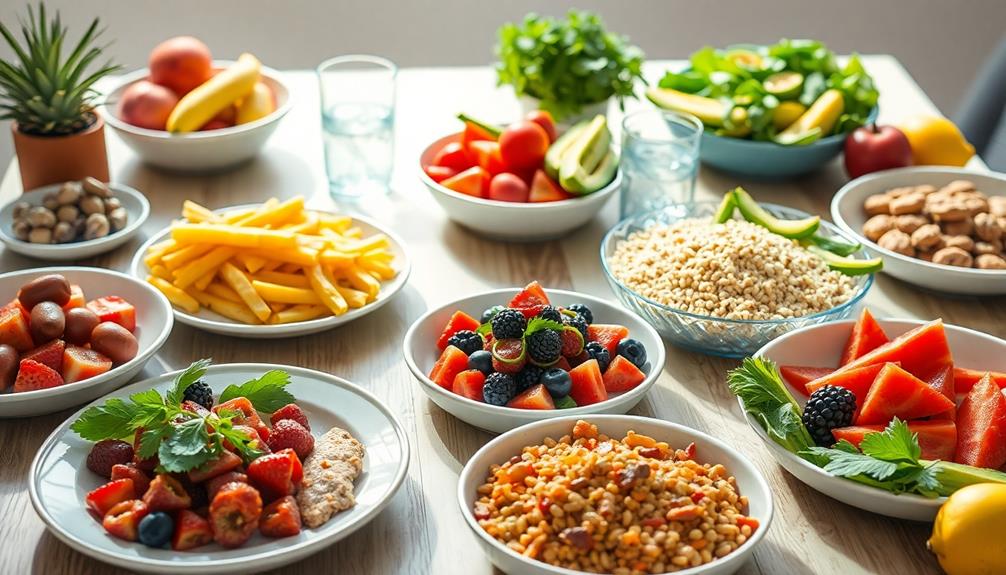
Steering through the pressures of social media doesn't have to lead to unhealthy emotional responses. To foster healthier engagement, start by following accounts that promote positive and motivational food content. This approach can help you mitigate negative self-image and unhealthy comparisons.
Exploring diverse cuisines, such as Ethiopian dishes, can inspire you to appreciate the beauty of nutritious meals while enjoying vibrant flavors. Limiting your social media usage to just 30 minutes a day can also greatly improve body image and self-esteem, especially if you're a teen or young adult.
Engaging with trusted sources like registered dietitians and professional chefs provides you with accurate nutrition advice, supporting healthier dietary choices. Additionally, consider disabling cookies and recommended features on social media platforms. This simple action can help control your exposure to unhealthy food marketing and content.
Practicing mindful consumption is key. Documenting your healthy meals not only reinforces positive eating behaviors but also enhances your overall enjoyment of nutritious foods.
Cultural Trends in Food Sharing
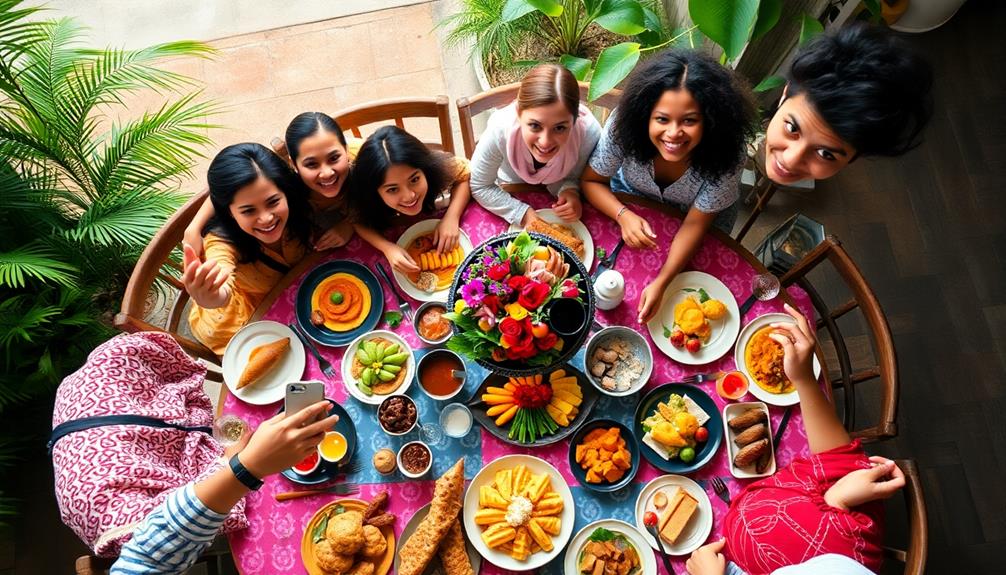
In today's digital age, sharing meals online has evolved into a vibrant cultural trend that connects people through the universal language of food. You might notice how food photography has become a staple on social media platforms, particularly among millennials. This trend fosters social interactions and enhances your dining experience, as you're likely to see #foodporn trending with over 438 million posts.
Southern cuisine, with its rich and diverse offerings like squash casserole, adds a unique twist to this phenomenon, inviting more people to share their culinary delights.
Here are four key aspects of this cultural phenomenon:
- User-Generated Content: With over 200,000 food images posted every minute, you're part of a massive community contributing to a collective visual feast.
- Social Validation: When you share your food photos, the likes and comments provide a sense of approval, reinforcing your social ties.
- Dining Dynamics: Capturing the perfect shot can disrupt dining experiences, creating feelings of FOMO among those who don't partake.
- Culinary Expectations: The popularity of foodstagramming shapes how you and others perceive meals, leading to higher expectations for presentation and creativity.
This cultural trend showcases how food sharing transcends mere sustenance; it's about connection and shared experiences.
Frequently Asked Questions
What Is the Psychology of Foodstagramming?
When you foodstagram, you're not just sharing meals; you're engaging in a ritual that enhances your anticipation. This act can heighten enjoyment, but overexposure to images might leave you feeling less satisfied during actual meals.
What Is the Psychological Impact of Food?
You've probably felt like a culinary king or queen, but the psychological impact of food goes deeper. It shapes your emotions, influences your cravings, and can even alter how much you enjoy each bite.
What Is the Psychology Behind Food Photography?
When you capture food photography, you're engaging with visual stimuli that heighten your anticipation. This can enhance your meal experience, but overexposure might lead to diminished desire and eventual sensory boredom with similar foods.
What Is the Impact of Food Influencers?
Food influencers shape your eating habits by showcasing visually appealing meals, making you crave what you see. You might feel pressured to try extravagant dishes, often prioritizing looks over nutrition, impacting your dietary choices.
Conclusion
In the vibrant tapestry of social media, 'instagrammable' food weaves a complex relationship with our minds and plates. As you scroll through mouthwatering images, remember that your choices shape not just your body, but also your emotional landscape. Embrace the beauty of food while nurturing a healthier connection to what you eat. Let each bite be a brushstroke on the canvas of your well-being, balancing indulgence with mindfulness in this ever-evolving culinary gallery.
